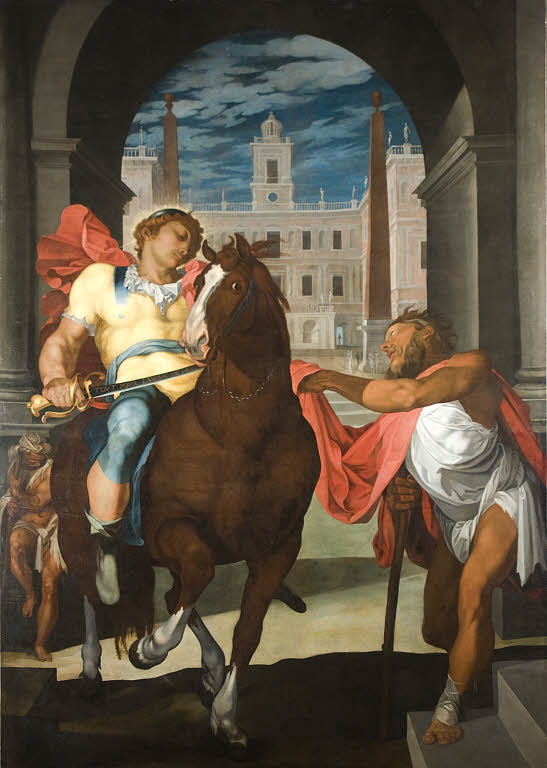Martin Fréminet on:
[Wikipedia]
[Google]
[Amazon]

 Martin Fréminet (24 September 1567 – 18 June 1619) was a French painter.
Martin Fréminet (24 September 1567 – 18 June 1619) was a French painter.
in the

 Martin Fréminet (24 September 1567 – 18 June 1619) was a French painter.
Martin Fréminet (24 September 1567 – 18 June 1619) was a French painter.
Biography
Fréminet was born and died inParis
Paris () is the Capital city, capital and List of communes in France with over 20,000 inhabitants, most populous city of France, with an estimated population of 2,165,423 residents in 2019 in an area of more than 105 km² (41 sq mi), ma ...
. According to the RKD he was a painter and engraver who is considered a member of the Second "School of Fontainebleau
The School of Fontainbleau (french: École de Fontainebleau) (c. 1530 – c. 1610) refers to two periods of artistic production in France during the late Renaissance centered on the royal Palace of Fontainebleau that were crucial in forming the No ...
".Martin Fréminetin the
RKD
The Netherlands Institute for Art History or RKD (Dutch: RKD-Nederlands Instituut voor Kunstgeschiedenis), previously Rijksbureau voor Kunsthistorische Documentatie (RKD), is located in The Hague and is home to the largest art history center i ...
Several of his ceiling decorations at the Palace of Fontainebleau
Palace of Fontainebleau (; ) or Château de Fontainebleau, located southeast of the center of Paris, in the commune of Fontainebleau, is one of the largest French royal châteaux. The medieval castle and subsequent palace served as a residence ...
survive.
Fréminet, a French historical painter, was born in Paris in 1567. He received his first instruction from his father, a tapestry designer. He soon made some progress in his career in Paris, and executed several commissions, including a picture of ''St. Sebastian'' for the church of St. Joseph. But it was to Italy that his thoughts turned, and about 1592 he set out thither. At this time the controversies raised by the Naturalisti were at their height, and into them Fréminet entered with ardour. His time was chiefly passed at Rome
, established_title = Founded
, established_date = 753 BC
, founder = King Romulus (legendary)
, image_map = Map of comune of Rome (metropolitan city of Capital Rome, region Lazio, Italy).svg
, map_caption ...
, Parma
Parma (; egl, Pärma, ) is a city in the northern Italian region of Emilia-Romagna known for its architecture, music, art, prosciutto (ham), cheese and surrounding countryside. With a population of 198,292 inhabitants, Parma is the second mos ...
, and Venice
Venice ( ; it, Venezia ; vec, Venesia or ) is a city in northeastern Italy and the capital of the Veneto region. It is built on a group of 118 small islands that are separated by canals and linked by over 400 bridges. The isla ...
, and he directed his most serious attention to the works of Parmigiano
Parmesan ( it, Parmigiano Reggiano; ) is an Italian hard, granular cheese produced from cows’ milk and aged at least 12 months.
It is named after two of the areas which produce it, the provinces of Parma and Reggio Emilia (''Parmigiano'' i ...
and Michelangelo, the study of the latter having a great influence on him.
After an absence of about sixteen years he returned to his native country by way of Lombardy and Savoy, and in the latter he painted some important works for the ducal palace. His fame had preceded him, for on the death of Toussaint Du-Breuil in 1602 he was appointed by Henry IV his principal painter, obtaining at the same time by purchase a sinecure post about the court. In 1608 he commenced for the king the decoration of the chapel at Fontainebleau, which was executed in oil on plaster. In the five compartments of the ceiling he depicted ''Noah entering the Ark,'' the ''Fall of the Angels,'' ''Our Lord in Glory,'' the ''Angel Gabriel,'' and the ''Creation.'' Behind the altar he painted the ''Annunciation,'' and he also executed other frescoes representing kings, prophets, &c., and scenes from the life of Christ. This masterpiece was not finished until the succeeding reign, and on its completion, in 1615, he received the cross of the Order of St. Michael.
Fréminet died in Paris in 1619, and was buried, in accordance with his desire, in the Abbey of Barbeaux, near Fontainebleau, for which he had painted several pictures, which were destroyed when that Abbey was burnt in 1793. He left a son Louis, who followed in his father's footsteps as a painter. The poet Regnier was his friend, and dedicated to him his tenth Satire. Fréminet had a good knowledge of architectural perspective and of anatomy, though his aspirations after the grandeur of Michelangelo frequently led him into exaggerations, and have caused him to be much decried. To do him justice, however, it must be owned that he marks a great advance in the history of the French school. The works of his predecessor. Cousin
Most generally, in the lineal kinship system used in the English-speaking world, a cousin is a type of familial relationship in which two relatives are two or more familial generations away from their most recent common ancestor. Commonly, ...
, are no doubt the earliest which show the impress of Italian art, but it was Fréminet who first fully felt and evidenced the influence of the great Italian masters. He is seen at his best in those works in which the spirit of Parmigiano is most apparent. His style of working was singular: he painted a picture in separate portions, without sketching or designing the rest of the composition.
References
Attribution: *External links
* {{DEFAULTSORT:Freminet, Martin 1567 births 1619 deaths 16th-century French painters French male painters 17th-century French painters Painters from Paris Premiers peintres du Roi French Mannerist painters